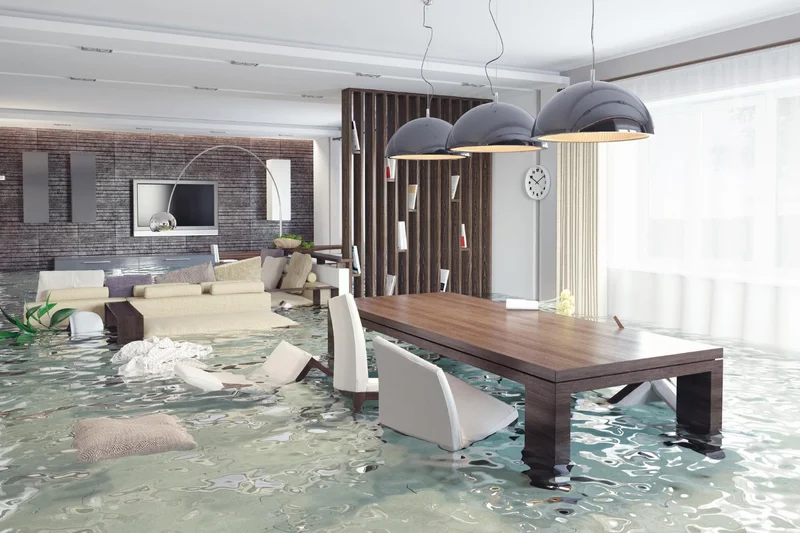Beyond the Mop and Bucket: How Tech Is Rewriting the Future of Flood Recovery
Let's be honest for a moment. When you hear "water damage restoration" or "flood water damage restoration," what immediately springs to mind? For most of us, it's a scene of chaos: sodden carpets, frantic pumping, the heavy, humid air of a home struggling to breathe again. We picture industrial fans roaring, dehumidifiers working overtime, and a team of dedicated professionals racing against the clock to salvage what they can. And make no mistake, the work done by those searching for "flood damage restoration near me" or a "flood damage restoration service" in places like San Diego or Austin is absolutely vital, a testament to human resilience in the face of nature's fury. But here’s the thing: that image, while accurate for today, is rapidly becoming a relic of the past. We're on the cusp of a profound transformation, moving beyond reactive cleanup to proactive, intelligent resilience.
Some might shrug, saying, "Water damage is just a fact of life, something you clean up with elbow grease and industrial fans." But I look at that sentiment and see an opportunity, a challenge begging for innovation. This isn't just about cleaning up; it’s about a paradigm shift in how we interact with our environment, how we protect our most precious spaces, and how we leverage the incredible power of technology to mitigate disaster before it even truly settles in. Imagine a world where the search for "flood damage restoration San Diego" isn't a desperate plea in the aftermath, but a query about advanced, preventative services that keep homes dry and safe. That's the future we're not just dreaming about, but actively building.
The Invisible Army: Sensors, AI, and Robotics to the Rescue
Our "Big Idea" here isn't just better pumps; it's about shifting the entire reactive paradigm of flood damage restoration into a symphony of predictive analytics, autonomous intervention, and rapid, intelligent recovery. Think about it: right now, a flood event is often a surprise, a sudden deluge that leaves destruction in its wake. But what if we had an invisible army working tirelessly, constantly monitoring, predicting, and even acting?
We're talking about advanced sensor networks—think of them as the nervous system of a smart city or a smart home, constantly monitoring environmental data, soil saturation, river levels, even localized micro-climates. These aren't just weather apps; these are hyper-localized, real-time data streams feeding into powerful AI models that can predict potential flooding with unprecedented accuracy, sometimes hours or even days in advance. This isn't science fiction; it’s happening now. The speed of this is just staggering—it means the gap between today and tomorrow, between being caught off guard and being prepared, is closing faster than we can even comprehend.

And when a breach does occur? That's where robotics and advanced materials step in. Imagine the quiet hum of autonomous drones, their sensors mapping every damp spot, every hidden pocket of moisture, long before a human team even steps foot inside a water-logged home. These aren't just flying cameras; they're equipped with hyperspectral imaging to detect moisture invisible to the naked eye, identifying the precise extent of water damage restoration needed. And then, ground-based robotic units, specifically designed for precision drying and sterilization, can move in, extracting moisture and applying antimicrobial treatments with a consistency and speed that human teams, no matter how skilled, simply can't match. This isn't about replacing human ingenuity; it's about augmenting it, freeing up human specialists for the complex, nuanced tasks that truly require their expertise, while the machines handle the heavy, dangerous, and repetitive lifting. When I first envisioned this fully integrated system, honestly, I felt a jolt of pure excitement, the kind that reminds you why you got into this field in the first place.
Rebuilding Smarter, Stronger, and Faster
This isn't just about faster cleanup; it's about fundamentally changing the equation of disaster recovery. Think back to the early days of medicine—often reactive, treating symptoms after they appeared. Now, we have preventative care, early detection, and targeted therapies. We're applying that same leap to flood damage restoration service. The technology allows us to move from a "wait and see" approach to a "predict and prevent" mindset.
Consider the ethical implications, though. With such powerful predictive capabilities, who gets access to the warnings? How do we ensure these advanced systems are accessible to everyone, not just the privileged few in affluent areas, but also vulnerable communities frequently hit by floods? These are the crucial questions we, as innovators and citizens, must grapple with as we deploy these tools. Because true progress isn't just about what's technically possible, but what's ethically responsible.
On forums and in online communities, I've seen a groundswell of optimism for this kind of future. One user, "ResilientHomes_2030," put it perfectly: "This isn't just about cleaning up; it's about rebuilding smarter, stronger, and more sustainably. It's about giving us back our peace of mind." What could it mean for you to know that your home is protected by an intelligent shield, constantly vigilant, ready to act? What does it mean for communities to recover not just faster, but better? The entire concept of "flood damage restoration Austin" or anywhere else becomes less about a crisis, and more about a managed, almost seamless process of recovery and enhancement.
The Dawn of Resilient Living
The future of water damage restoration isn't about simply mopping up. It's about a revolutionary blend of AI, robotics, and advanced materials science that will fundamentally redefine our relationship with nature's unpredictable power. We're moving towards a world where homes and communities aren't just rebuilt, but are reborn stronger, smarter, and more resilient than ever before. This isn't just a technological upgrade; it's a profound shift in how we envision safety, sustainability, and the very fabric of our lives. The future isn't just coming; it's already here, whispering promises of a drier, more secure tomorrow.

